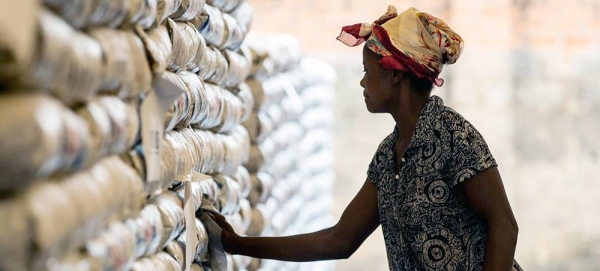
Ayman al-Jazouri, who was injured in a landmine blast, has succumbed to his wounds at a hospital in the eastern Libyan city of Benghazi, joining other victims of mines planted by extremist groups before their ouster.
The young man had suffered multiple wounds all over his body in the landmine explosion that also left his friend injured.
But Jazouri’s severe wounds in his feeble body left him dead in a case reminiscent to similar incidents that have either killed or maimed citizens in several cities that were once ruled by ISIS.
The Benghazi Revolutionaries Shura Council (BRSC) and allies are believed to have been responsible for leaving mines and explosive remnants of war (ERWs) in areas of Benghazi they controlled prior to their retreat, the United Nations Support Mission in Libya (UNSMIL) said in a report earlier this month.
On Wednesday, on the occasion of International Day for Mine Awareness and Assistance, UNSMIL organized in Tripoli a press conference that was attended by several top Libyan officials to discuss the dangers of landmines in the capital, Sirte and Benghazi.
Libyan Mine Action Center (LibMAC) Director Mohammed Al-Torjman told the conference that Libya marks Mine Awareness Day to send a message to the international community that the country is committed to protecting its civilians from danger.
The achievements for 2016-2017 were the destruction of 300 tons of ERW stockpiles, he said.
Deputy Head of UNSMIL Maria Ribeiro also spoke at the conference, saying the “presence of landmines, improvised explosive devices and unexploded ordnance has been a persistent threat to the Libyan population.”
They also hinder the safe return of internally displaced people and restrict access for humanitarian workers, she said. “The safety and dignity of Libyans is the reason we are here today.”
“Last year we celebrated Mine Awareness Day in Tunis. Today the UN is back in Libya and for the first time in four years we mark this day in Tripoli,” she added.
But despite international efforts to raise awareness on landmines and their dangers, unexploded ordnance continue to cause casualties in some cities in eastern and western Libya.
Spokesman of Sirte’s demining brigade Salem al-Emil told Asharq Al-Awsat that his group has been able to clear mines in several regions abutting Sirte, complaining that the brigade lacks the needed equipment to act.
“We haven’t received assistance of any sort. Our work is based on personal efforts,” he said.
Emil said there is no official count on the number of victims. “We don’t have the capabilities to do so and the Government of National Accord hasn’t even thanked us on the efforts we are exerting.”
He told Asharq Al-Awsat that recently, several people, including children, were killed and their limbs mutilated in ERW explosions.
At the end of January, the United Nations Mine Action Service (UNMAS) said it completed phase one of its initiative to destroy ERW which have been endangering the lives of Misratan communities, and of the wider Libyan population.
More than 200 tons of ERW were successfully eliminated with the support of the Governments of Denmark and South Korea, which are contributors to the United Nations Voluntary Trust Fund for Assistance in Mine Action, it said.
UNMAS, in cooperation with the Danish Demining Group (DDG), enhanced the Libyan capacity to tackle the ERW threat through training in safe handling of ERW, provided to 20 national personnel, it stated.
Under international direction, the trained Libyan staff then destroyed 203 tons of ERW, UNMAS added.












